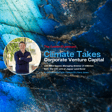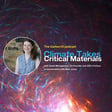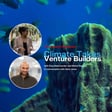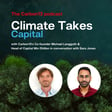
Climate Takes Concrete
Welcome to Carbon13's podcast "Climate Takes" where we ask special guests for their "takes" on their industry and climate challenge, as well as setting a call to action, asking what will it take to solve the climate emergency?
In this episode hosted by Sara Jones, we speak to Eliot Brooks, CEO and Co-founder of Cocoon Carbon. In just 18 months, the cofounding team has scaled their technology to TRL6, raised $5.4m in pre-seed funding, and grown the company to 12 people.
Eliot was already an award winning entrepreneur and Forbes 30 Under 30 when he joined Carbon13's Venture Builder in 2023, in this episode, he shares his journey and his mission to make Cocoon Carbon one of the fastest growing climate hardware companies in the world.
Why does concrete matter? Concrete is the second most used man-made material after water. It's also one of the biggest single emitters of carbon dioxide, responsible for 8% of emissions. If it was a country, it would be the 3rd or 4th most polluting country in the world.
Sara Jones is Head of Marketing at Carbon13. She's worked in London's startup ecosystem for well over a decade and has been with Carbon13 since 2020, turning it into one of the strongest magnets for climate focused entrepreneurs in Europe.









